Review: 2013 Ford C-Max Hybrid (Video)

Up till now there hasn’t been a “real” Prius alternative on the market. Sure Honda has the Civic and Insight, but their real-world MPGs can’t hold a candle to the green-car poster child and Honda’s IMA hybrid system is far from smooth and refined. The Volt is more of a novelty with its lofty price tag and the last time we tested one we revealed a lowly 32MPG average when running gasoline only. This brings us to the blue oval. Despite Ford using essentially the same technology as Toyota for their hybrid systems, Ford resisted creating a dedicated hybrid model. Until now. Meet the 47MPG 2013 Ford C-MAX Hybrid. Of course we’ve all heard the news that the C-MAX doesn’t hit 47MPG, so click-through the jump to find out what we averaged and whether or not that should matter to you.
Exterior
What Ford didn’t do was create a futuristic wedge-shaped car on a dedicated platform crafted from light-weight ultra-eco-friendly materials in an attempt to create the most efficient car in America. Disappointed? Don’t be, because the benefits may just outweigh the drawbacks. Instead Ford took the existing (since 2011) Focus-based C-Max from Europe, stuffed Ford’s most powerful hybrid drivetrain under the Euro sheetmetal and slapped some wide (for a hybrid) tires on what might just be the first hybrid hot hatch.
Speaking of that sheetmetal, the C-MAX strikes an interesting pose on American roads looking like the product of crossbreeding a Focus and a Windstar. The resulting hatchback has a tall greenhouse, tall roof-line and some crossover styling cues no doubt to confuse entice the suburban set. Measuring in at 173 inches long, the C-MAX is 2 inches longer than the Focus hatchback on which it is based, but 3 inches shorter than a Prius and 8 inches shorter than a Prius V.
Of course none of this really explains the strange “C-MAX” name. Yes, that’s what it’s called in Europe, but why? Still, it’s no stranger than “Prius” and whatever you think of its name, the C-MAX is considerably more attractive than Toyota’s bulbous hybrid wagon.
Interior
The C-MAX doesn’t just look like a wannabe crossover on the outside, it does on the inside as well. There’s a reason for this. Instead of sharing heavily with the Focus hatch as you might assume, the C-MAX shares parts and interior styling with the 2013 Escape. The only major style change to the dash is a unique instrument cluster similar with twin 4.2-inch LCDs like the Fusion hybrid. Unlike the Prius, you won’t find any thin, hard, weight saving plastics in the cabin. There are no blue-tinted transparent button arrays, no shifter joystick and no center-mounted disco dash either. Instead you will find a premium cabin that would pass muster in any $30,000 vehicle and looks notably more premium than the Lexus CT 200h. The Prius on the other hand is full of plastics and fabrics more at home in a $16,000 econo-box.
The C-MAX seats can be had in your choice of charcoal or a “greyish” tan fabric or leather but regardless of your choice, the majority of the interior is black-on-black. The overly black theme is both very European (in a good way) and a bit cold (in a bad way) for my tastes. Front seat comfort is good thanks to a relatively upright seating position, wide seat cushions and a good range of motion when you get the power driver’s seat. The tilt/telescopic steering wheel made finding a comfortable driving position quick and easy. The upright seating is what allows the C-MAX to have Prius matching rear leg room, an improvement of three inches over the Focus hatchback’s more reclined thrones.
The rear seats are a bit close to the floor for adult passengers but are the right height for most children and young teens. Despite looking tall and narrow, the C-MAX is more than three inches wider than the Prius and this allows three to sit abreast in the rear in greater comfort. The rear seat backs fold completely flat with the 24.5 cubic foot cargo area. Because the C-MAX wasn’t designed as a hybrid from the start, the battery pack occupies all the spare tire space in the C-MAX as well as a few inches on the cargo area floor. The reduced cargo space is a few cubes larger than the Prius liftback but smaller than the Prius V. Despite the cargo hauling reduction vs the European gasoline-only model, the C-MAX easily swallowed four roller bags with room to spare.
Infotainment
Like the Android vs iPhone debate, “infotainment systems” spark fierce debate. No system other than iDrive has received as much bad press, fan-boy rave reviews and healthy imitation as the strangely named “MyFord Touch.” (Really, what was wrong with SYNC?) The system (optional on SE, standard on SEL trim) combines your climate, entertainment, telephone and navigation chores into one integrated system that looks snazzy and responds via voice commands to your every whim. When it landed in 2010 it became obvious the software was rushed to market complete with more bugs than a bag of 5-year-old flour. Still, the system is still unique in the market for allowing you to voice command just about everything from your destination to your temperature and what Madonna track you want to listen to from your iPod.
The C-MAX benefits from a major software update released in March of 2012 (for all Ford products) to make the system more responsive. While the system never had a melt-down during my testing (a first for MFT), the slowness the system is known for persists. Like most MFT equipped vehicles, the C-MAX teams a snazzy in-dash touchscreen with twin 4.2-inch LCDs on either side of the speedometer. Perhaps a first for a hybrid vehicle, you won’t find a single screen on the main MFT screen that displays hybrid system information. No animated screen with a battery/motor/engine scree, no wacky driving hints, no fuel economy charts. Aside from the efficiency leaves that replace the climate option on the right-side 4.2-inch LCD and the intuitive kW gauge on the left LCD, there is nothing to identify the C-MAX as a trendy gasoline/electric people mover, and I think I like the move. Despite the system’s obviously flaws, MFT is far slicker and user-friendly than the Prius or Volt’s infotainment options.
Is Ford’s transmission a Toyota transmission?
The short answer is no. Long before Ford produced a hybrid vehicle, Ford and Toyota put out plenty of prototypes and concept cars. Both companies recognized the similarities of their competing hybrid designs and geared up for lawsuits. (Both designed shared plenty of cues from a TRW system from the 1960s.) Ford and Toyota did something rare in our litigious society, they settled and cross-licensed each-others technologies but (and most importantly) NOT their specific designs. Ford continued developing the Escape Hybrid solo and Toyota went on their way with Hybrid Synergy Drive. Some confusion was caused by Ford choosing Aisin build their hybrid transaxle for the Escape and Fusion hybrids because they didn’t have the capacity or expertise internally. Fast forward to 2012. Ford decided that in order to reduce costs and drive hybrid sales (for some CAFE credits of course) they had to take the design and manufacturing of hybrid systems in-house. This means that Ford’s hybrid system’s level of vertical integration is vastly similar to Toyota.
Drivetrain
Under the stubby hood of the C-MAX you’ll find Ford’s completely redesigned hybrid system with a downsized 2.0L Atkinson cycle four-cylinder engine good for 141HP and 129lb-ft of twist. This is down slightly from the old 155HP 2.5L engine in the old Fusion and Escape hybrids, but considerably higher than the Prius’s 98HP mill. In order to achieve the 188 system horsepower (11 more than the old Ford system and 54 more than the Prius) and a TTAC estimated 200-220lb-ft of twist, Ford put a hefty 118HP motor/generator into their in-house designed HF35 hybrid transaxle. If you want to know more about how the Ford and Toyota Hybrid systems work, click here.
Beneath the cargo area in the C-MAX sits a 1.6kWh lithium-ion battery pack. The lithium battery chemistry allows the hybrid system to charge and discharge the pack at rates higher than the old nickle based battery pack (used in the Escape and the Prius). This new battery allows the C-MAX to drive electric only up to 62MPH vs the 34MPH of the Prius. In addition, the C-MAX doesn’t need you to be as gentle on the throttle as the Prius or the older Ford hybrids.
Oh that fuel economy
Fuel economy is a tricky business because your driving style and topography are the biggest factors involved. I would caution readers to never compare my numbers with other publications because the driving conditions and styles are different. The 2012 Prius, when driven gently on my commute, (120 miles round trip with a 2,200ft mountain pass) averaged 46-47MPG which is fairly close to its 51/48/50 EPA rating (City/Highway/Combined). The C-MAX on the other hand averaged 41.5 during our 568 miles of testing and the lowest one-way figure on my daily commute was 39MPG. Sound good so far? There’s a problem, even on a level freeway at 65MPH the C-MAX struggled to get better than 45MPG in 60 degree weather. The Prius in the same situation averaged 50MPG. The Prius V suffered a similar shortfall in my week of testing coming in four MPG below its EPA combined 42MPG rating. We need to put these numbers in perspective. Driving 15,0000 miles a year with gas at $4 a gallon the C-MAX would cost $144 a year more to operate than a Prius and $148 less than a Prius V.
On the road
There are a few reasons the C-MAX fails to meet Ford’s fuel economy claims. The first is the portly 3,600lb curb weight, the second is the wide 225/50R17 tires which have a 23% larger contact patch than the Prius’ 195/65R15 rubber. On the flip side, the wide low-profile rubber pays real dividends when the road bends and the heavy curb weight helps the C-MAX to feel lass “crashy” than a Prius over broken pavement. Coupled with a Focus derived suspension, the tires help the C-MAX set a new benchmark for hybrid handling easily besting the CT 200h. While the electric power steering robs the hybrid hatch of 99% of its road feel, it still manages to be more engaging than a Prius. Admittedly not a hard thing to do.
Stomp on the C-MAX’s accelerator pedal and something surprising (for a hybrid) happens: acceleration. If the road surface is right you’ll even get some one-wheel-peel. Despite weighing a whopping 600lbs more than a Prius, the C-MAX sprints to 60MPH 2 seconds faster posting a solid 7 second run to highway speeds. I’d like to compare it to the Prius V and Lexus CT 200h, but I gave up after 9.5 seconds. This makes the C-MAX as fast as the Focus ST and faster than a Volkswagen GTI.
In addition to being more powerful, the C-MAX’s hybrid system is capable of operating in EV mode at higher speeds and in a broader range of conditions than the Prius. While it doesn’t seem to help the C-MAX hit its advertised 47/47/47 MPG (City/Highway/Combined) it is a novelty that entertained drivers and passengers alike. Thanks to a more powerful motor, faster discharging battery, and aggressive software, it’s possible to accelerate up to40 MPH in EV mode without pissing off the cars behind you. Doing so brings the C-MAX’s other selling point to light: Ford’s sound deadening measures are extensive and make the C-MAX the quietest hybrid this side of the insane LS 600hL.
Ford has wisely priced the C-MAX aggressively starting at $25,200 and there’s already a Ford $1,000 cash back offer dropping the price to the same as the 2013 Prius’ MSRP and $2,450 cheaper than a Prius V. The up-level SEL model which comes standard with leather, heated seats, rain sensing wipers, backup sensors, ambient lighting, keyless entry/go for $28,200. Should you desire some plug-in love, the Energi model will set you back $32,950. The deal gets even better when you consider the C-MAX has more standard equipment and features and options unavailable in the Prius at any price.
The week after Ford lent me the C-MAX hybrid Consumer Reports’ “bombshell” about the C-MAX’s fuel economy numbers dropped. But does it matter? Is a 41MPG C-MAX a failure? No, and here’s why. The only measurable way the Prius is better than the C-MAX is real world fuel economy where the Prius will save you a few Grants a year. In every other way the C-MAX is superior to the Prius and even the Lexus CT 200h. Does this compensate for the “lackluster” fuel economy? It does in my book. If you’re willing to spend $144 a year in higher fuel costs for a more entertaining ride, this Ford’s for you. The C-Max isn’t just a shot across Toyota’s bow, it’s the first honest-to-goodness competitor on the market. Better yet, it’s not a me-too Prius, it’s a unique and compelling alternative.
Ford provided the vehicle, one tank of gas and insurance for this review
Specifications as tested
0-30: 2.9 Seconds
0-60: 7.05 Seconds
1/4 Mile: 15.55 Seconds @ 92 MPH
Average Fuel Economy: 41.5MPG over 625 Miles

More by Alex L. Dykes
Latest Car Reviews
Read moreLatest Product Reviews
Read moreRecent Comments
- Poltergeist I expect this will go over about as well as the CR-Z did 15 years ago.
- Michael S6 Welcome redesign from painfully ugly to I may learn to live with this. Too bad that we don't have a front license plate in Michigan.
- Kjhkjlhkjhkljh kljhjkhjklhkjh A prelude is a bad idea. There is already Acura with all the weird sport trims. This will not make back it's R&D money.
- Analoggrotto I don't see a red car here, how blazing stupid are you people?
- Redapple2 Love the wheels



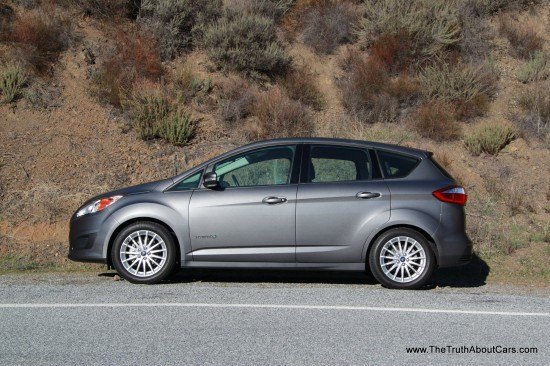










































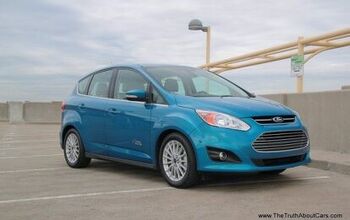
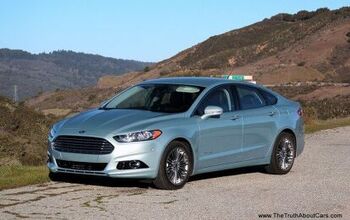

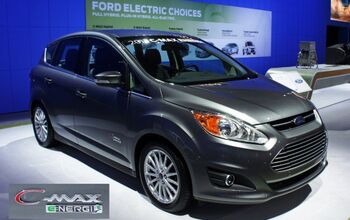
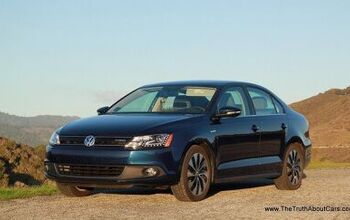










Comments
Join the conversation
Where do I join a class action lawsuit for being deceived on my C-Max with the claimed 47 MPGs? About 4,000 miles later, using the cruise for acceloration (as I'm sure the computer is programmed for best mpg accelorating), and averaging 37.8MPG while never going over the speed limit...I'm very dissapointed. And yes I do know how to squeeze MPG's out of gallons as my 2003 Jetta Diesel is averaging 48.8mpg anually here in Minnesota. I would like to have a C-Max follow a Prius on a 500 mile minimum trip and have the two cars then compare their MPGs. This way you remove the human element and have the cars driven under identical conditions. My bet is that the Prius will be 22.6% better in MPGs. Anyone up for the test?
I had a C-Max, i enjoyed my car very much with my friends and family. Last week i lost back right wheel in a accident, and i was suffering with money problem so i take finance from Audiocityusa And now car become as new.